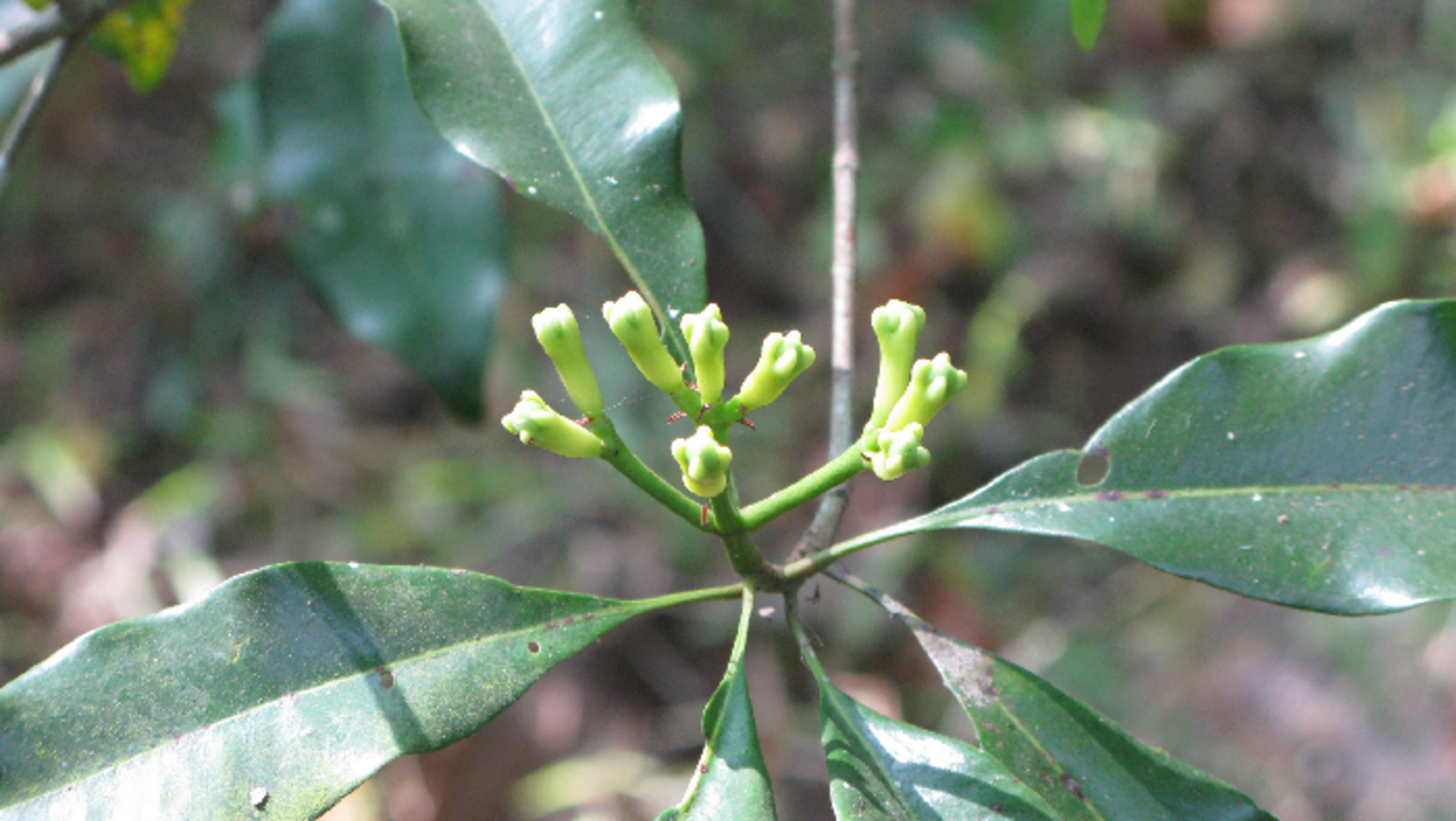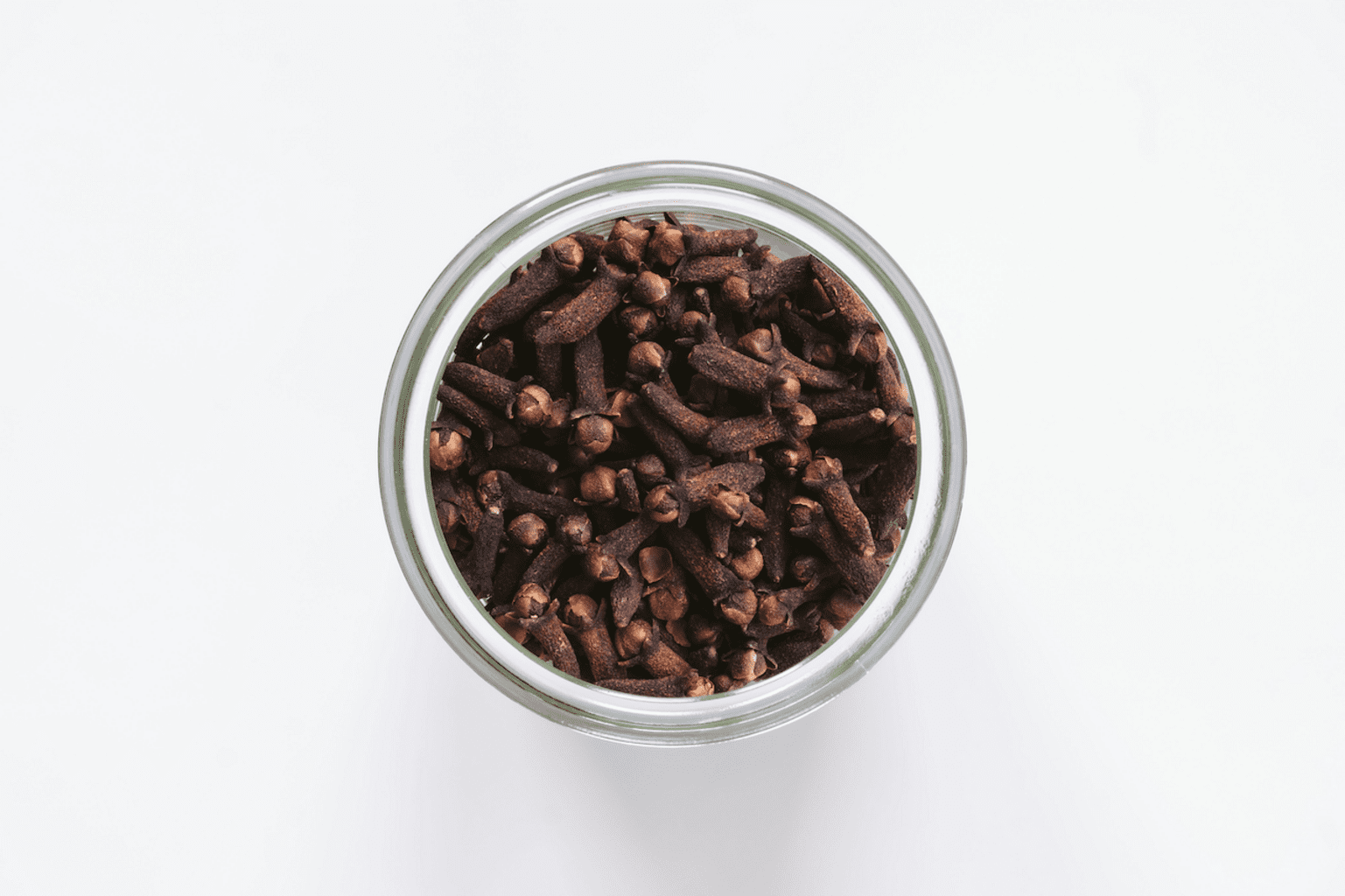Clove
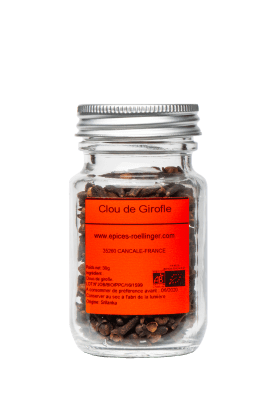
Recommendations
-
Allergens
Absent, except for cross-contamination.
May contain traces of sesame, celery, mustard, soy. - Origin Sri Lanka
- Storage / Use In a cool, dark and dry place.
Olivier Rœllinger's words
I use this spice in most of my spice blends. It’s an essential element that provides a refined backdrop to sweet, smooth flavor notes. I love its classic pairing with onions and other alliums as well as with vegetable and seafood broths.
Story
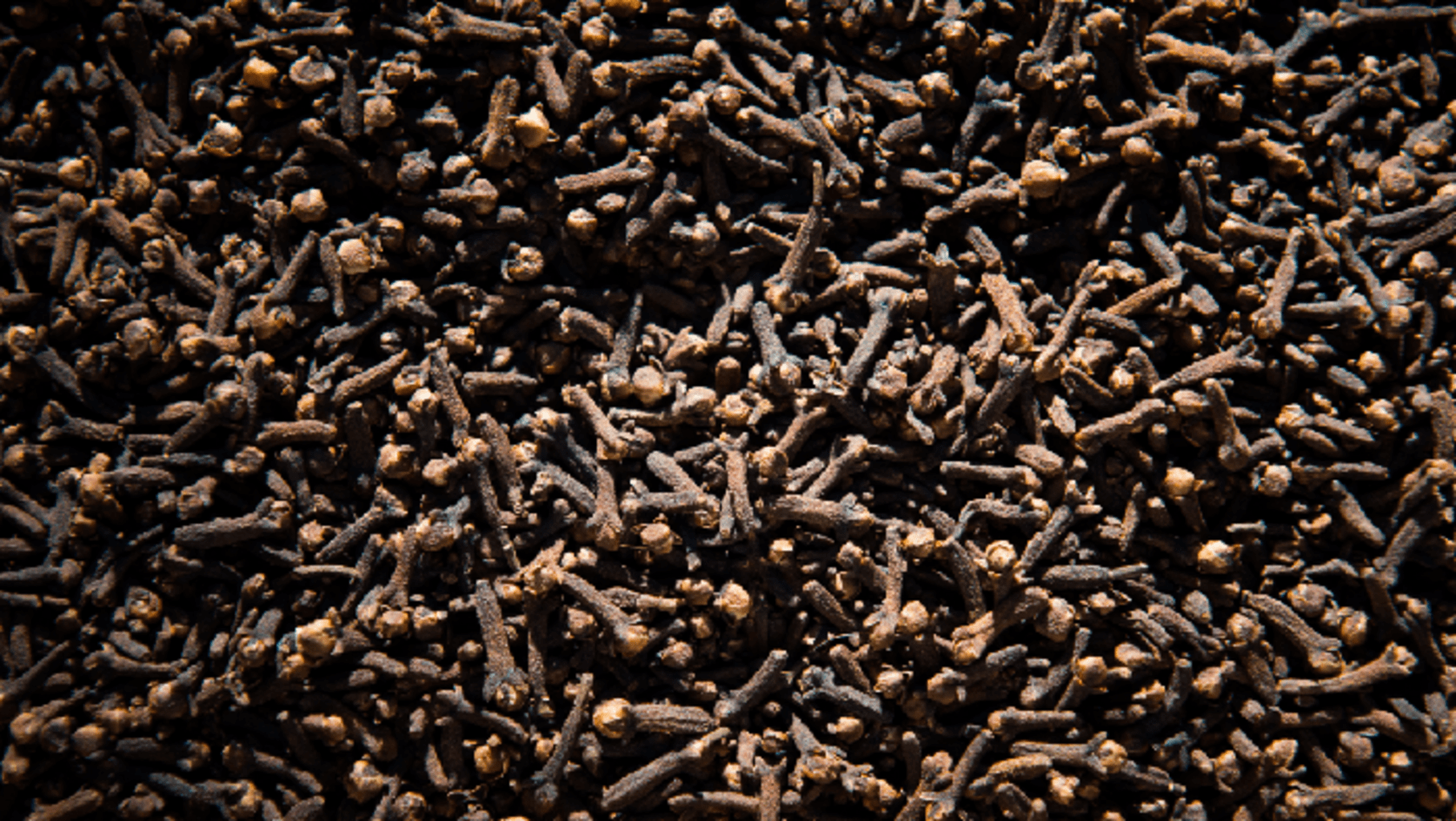
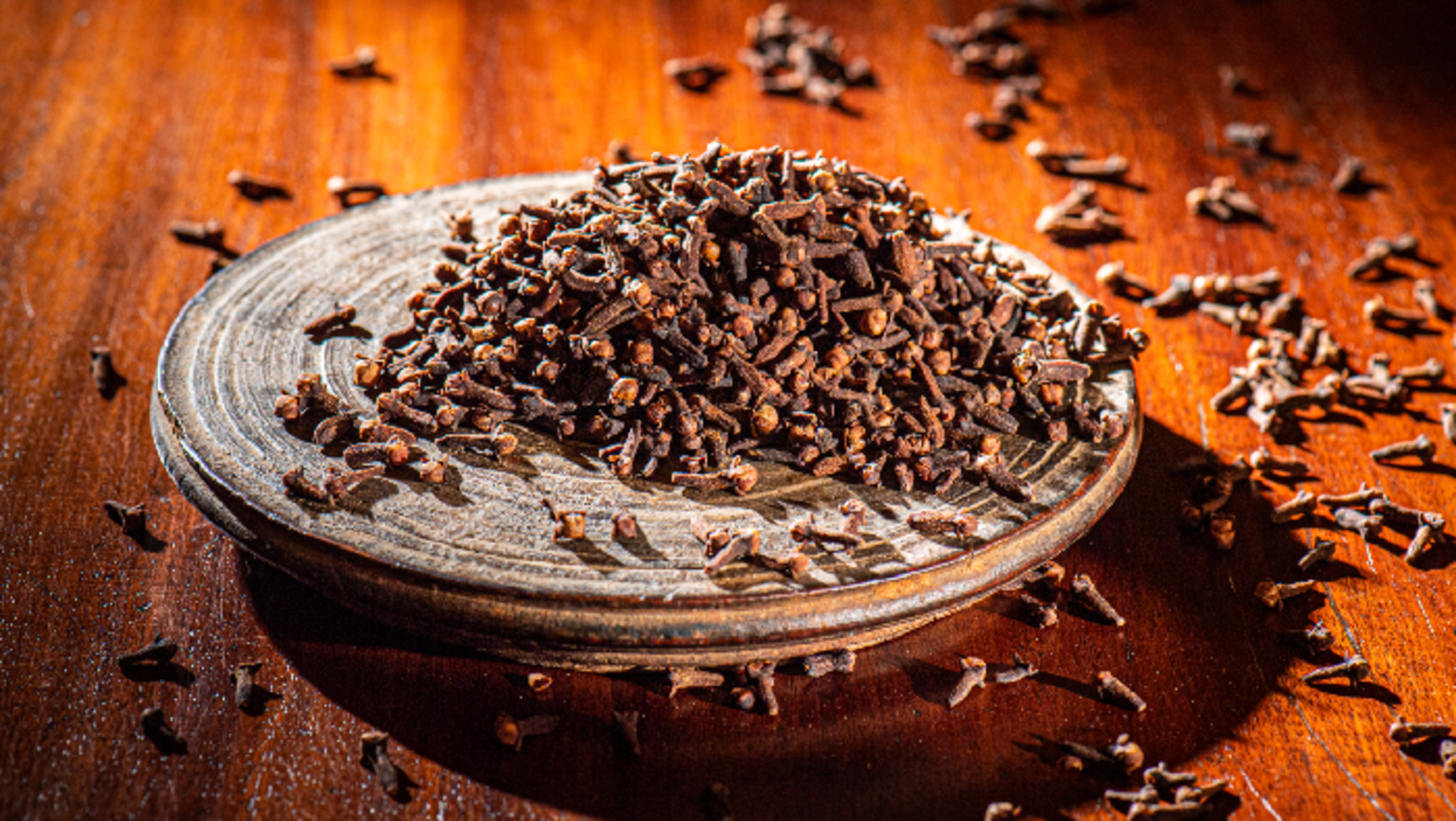
Cloves (Eugenia caryophyllata) are flower buds of a beautiful tropical tree that can grow up to 10 meters high. The yellow, green, and pink buds are gathered by hand then dried in the sun where they develop a dark brown color very quickly.
The tack-shaped spice is native to the Maluku Islands in Indonesia. For centuries, cloves’ origin was shrouded in mystery because of their shape, their faraway source, and their pungent flavor. The aim of the expedition of Magellan was to discover the Maluku Islands to get the source of the cloves. Cloves were exceptionally rare, which meant they could garner astronomical prices, higher even than the cost of nutmeg or saffron. Until the Middle Ages, Europeans had little idea of the spice’s origins and imagined cloves came straight from the Garden of Eden. Two French spice traders, Mahé de la Bourdonnais, then Pierre Poivre, smuggled a few clove and nutmeg plants out of Indonesia the 18th century which allowed for the expansion of their cultivation to similar latitudes and tropical climates. These include the Mauritius Islands and their famous ‘Jardin des Pamplemousses’ (Grapefruit Garden), immortalized by French writer and botanist Bernardin de Saint Pierre.
Cloves’ antibacterial and antifungal properties are the key to their use in preserving foods in China, India, and Europe over the centuries.
